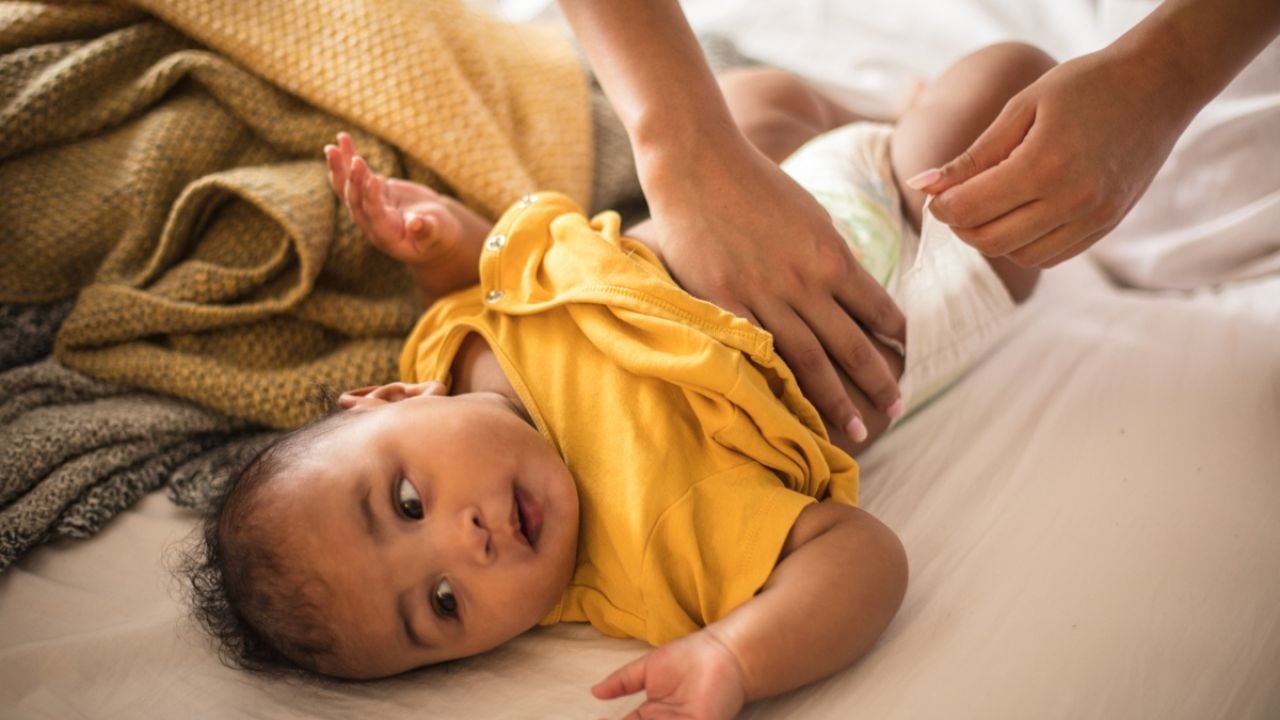
European regulators have rejected a proposal to restrict a handful of harmful chemicals in baby diapers, yet again showing basic government failures abroad and in the U.S. to protect our most vulnerable from potential health risks when using a everyday essential product.
The situation reeks of inadequate regulation and creates unnecessary dangers for babies. Until regulators take much-needed action, EWG is filling the gap with its EWG VERIFIED® Baby Diapers mark, which helps parents find diapers free from chemicals of concern.
Since single-use diapers were invented, about 100 years ago, they have evolved to meet changing expectations of convenience and efficacy. Adults buying diapers for their babies today place a premium on how well they keep infants clean and dry.
But accomplishing those twin goals – clean and dry – can involve adding to the diapers toxic chemicals that may put children’s health at risk. This is especially concerning, considering babies wear diapers all day every day, often for years, on an extremely sensitive and vulnerable area.
Babies exposed to toxic chemicals
In 2019, a study funded by the French Agency for Food, Environmental and Occupational Health & Safety, or ANSES, analyzed baby diapers to find out their contents. This assessment was the first time a health and safety agency had evaluated the safety risks of baby diapers.
After testing 23 types of diapers, ANSES singled out five chemicals of concern:
- Dioxins, highly persistent toxic chemicals that can form during the pulp bleaching process.
- Formaldehyde, a carcinogen and skin, eyes, nose, and throat irritant, can emit from formaldehyde-resin glues or form when fragrance ingredients react with ozone.
- PCBs, a class of synthetic chemicals known as polychlorinated biphenyls, were banned in 1979 because of their harm to human and environmental health.
- PAHs, or polycyclic aromatic hydrocarbons, can contaminate materials in wetness indicators and are linked to reproductive issues, lower body weight and birth defects in mice.
- Furans, persistent organic pollutants, like dioxins and PCBs, can cause eye, skin and mucous membrane irritation, and burning sensations. They are also known to cause cancer, and may come from bleached pulp in the production process.
These concerning chemicals detected in disposable diapers can come from intentionally added ingredients and materials, contaminated raw materials or through the manufacturing process.
Risks of exposure
Babies are an extremely vulnerable group when it comes to chemical exposure. Because their bodies are still developing and the genital area is especially thin, and therefore more sensitive, baby diapers can pose a unique harm to a child’s health.
But the chemicals in disposable diapers – including those that can harm the liver and lead to immune, nerve, metabolic and endocrine problems – are unregulated or underregulated.
To address the risks these diapers can pose for babies and toddlers, ANSES proposed creating an European Union–wide restriction on some of the 200 substances the study addressed. Limits are critical, ANSES said, because “lowering the migration limits of these chemicals in single-use baby diapers . . . is considered to significantly reduce the risk.”
Failure of government agencies
After ANSES submitted its proposal to the EU, a coalition of supportive groups stated that, without approving the plan, millions of babies and toddlers wearing disposable diapers:
. . . may be potentially exposed to harmful chemicals on a daily basis for several years. Chronic and long-term exposure to these substances may lead to a range of health effects such as skin sensitisation, cancer, adverse reproductive effects, genotoxic and endocrine effects – which can sometimes manifest later in life. [Emphasis added.]
But the European Chemical Agency, or ECHA – the body responsible for evaluating ANSES recommendations – quashed them. It said there wasn’t enough evidence to show the chemicals pose a risk. When in doubt, ECHA preferred to keep toxic chemicals in consumer products, even those used by such a vulnerable group.
With this decision, the European government failed to protect the roughly 4 million babies born in Europe every year, and set a troubling precedent for the U.S.
In this country, diapers aren’t regulated by the Food and Drug Administration, because they aren’t considered cosmetics or medical devices, like most menstrual products and incontinence diapers. And they aren’t regulated by the Federal Trade Commission, one of the few articles of clothing that isn’t.
They’re regulated by the Consumer Product Safety Commission, which doesn’t require transparency of ingredient labeling or limit the presence of chemicals other than lead.
EWG VERIFIED Baby Diapers
This underregulation of baby diapers is how EWG VERIFIED Baby Diapers came into existence.
We decided that in the absence of regulators’ will to safeguard the well-being of our babies and toddlers, we would step up to fill a huge, potentially very harmful gap.
A diaper bearing the EWG VERIFIED mark avoids EWG’s ingredients of concern, is completely transparent about its production, and meets all of our rigorous restrictions.
After all, it’s hard enough being a parent – you shouldn’t have to worry about what’s in your baby’s diaper. And, because of EWG VERIFIED Baby Diapers, you don’t have to.



